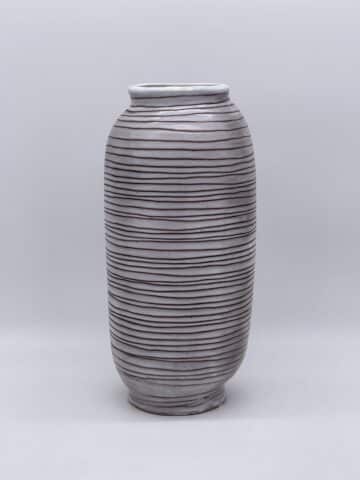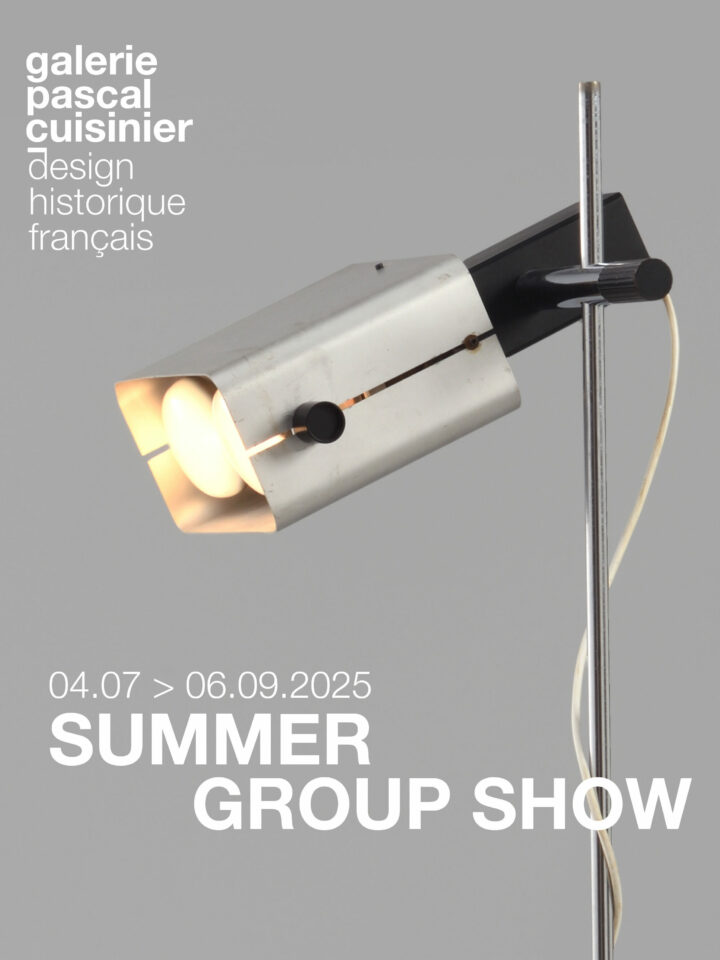Jean and Robert Cloutier
Chronology
Patrick Favardin, in his reference work on the artists, describes them as mavericks: "The work of the Cloutier brothers holds a unique place in French ceramics of the second half of the twentieth century. At once fascinating and disconcerting, the twins' production, grounded in a deep mastery of craftsmanship, acquired notably with Pol Chambost or Georges Jouve, has, since the opening of their workshop in 1955, blended inner necessity, irreverence, and humor.
Supported by a loyal and ever-growing clientele of collectors and professionals, their career unfolded in a nearly linear fashion, evading the whims of fashion as well as the shifts within their discipline. Their work is in many ways atypical, where technical mastery is happily combined with a lighthearted, even whimsical inspiration that doesn't always manage to dispel a hint of unease. This ambivalence governs a rich and diverse production, ranging from humble everyday objects or tableware, to claustras and glazed tiles. However, the domain in which they truly excel is in zoomorphic or anthropomorphic figuration, which populates their most ambitious works, where the contrast of black and an exceptionally dense vermilion (the famous 'Cloutier red') or the various highly sophisticated glazes are showcased. By the end of their joint career, they produced admirable sculpted pieces whose figurative and organic forms, adorned with a milky white or deep black, are laden with mystery and reflection. True free spirits in French ceramics, the Cloutier brothers, in their own way, embody the playful optimism of the 'Trente Glorieuses,' with success extending far beyond France, particularly in Japan and the United States. Free from any academic ties and unconcerned with creating a school, they represent a moment of grace in the decorative arts." Patrick Favardin, Norma, Paris, 2014
Supported by a loyal and ever-growing clientele of collectors and professionals, their career unfolded in a nearly linear fashion, evading the whims of fashion as well as the shifts within their discipline. Their work is in many ways atypical, where technical mastery is happily combined with a lighthearted, even whimsical inspiration that doesn't always manage to dispel a hint of unease. This ambivalence governs a rich and diverse production, ranging from humble everyday objects or tableware, to claustras and glazed tiles. However, the domain in which they truly excel is in zoomorphic or anthropomorphic figuration, which populates their most ambitious works, where the contrast of black and an exceptionally dense vermilion (the famous 'Cloutier red') or the various highly sophisticated glazes are showcased. By the end of their joint career, they produced admirable sculpted pieces whose figurative and organic forms, adorned with a milky white or deep black, are laden with mystery and reflection. True free spirits in French ceramics, the Cloutier brothers, in their own way, embody the playful optimism of the 'Trente Glorieuses,' with success extending far beyond France, particularly in Japan and the United States. Free from any academic ties and unconcerned with creating a school, they represent a moment of grace in the decorative arts." Patrick Favardin, Norma, Paris, 2014

